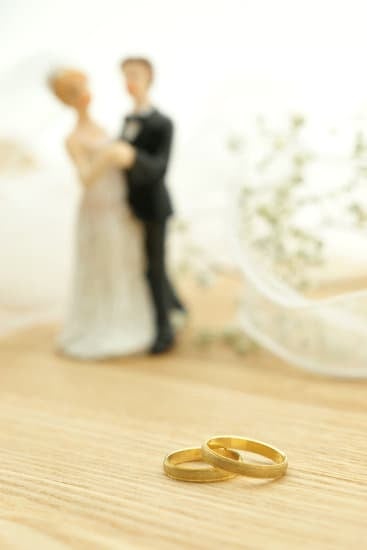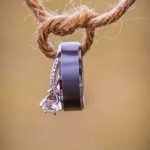Planning a wedding involves numerous details, and one of the most important is addressing the wedding envelopes. Knowing how to address an envelope for a wedding is crucial for setting the tone of your event and showing respect to your guests. Properly addressed envelopes not only convey essential information but also reflect the overall theme and formality of your special day.
Understanding the etiquette of addressing wedding envelopes is key to ensuring that your invitations are received with grace and respect. From choosing the appropriate calligraphy style to avoiding common mistakes, there are many considerations that go into this seemingly simple task. In this article, we will explore the significance of properly addressing wedding envelopes and provide a comprehensive guide on how to do so effectively.
Properly addressing wedding envelopes can greatly impact the impression your invitations make on guests. It sets the stage for what they can expect at your ceremony and reception, adding a touch of elegance and sophistication. Whether you opt for formal, casual, or themed invitations, knowing how to address an envelope for a wedding will help you create a cohesive and polished look for your big day.
Understanding the Etiquette of Addressing Wedding Envelopes
Properly addressing wedding envelopes is a crucial aspect of wedding planning that is often overlooked. Not only does it add an elegant touch to the overall presentation of the invitation, but it also sets the tone for the event itself. Understanding the etiquette of addressing wedding envelopes is essential to ensure that your invitations are received with the respect and formality they deserve.
When it comes to addressing wedding envelopes, there are a few key etiquette rules to keep in mind. Firstly, it’s important to use proper titles and full names when addressing the recipients. For married couples, the husband’s name should be listed first unless the wife has a professional title, in which case her name should come first. Additionally, for unmarried couples or families, each individual’s name should be listed separately on the envelope.
Another important aspect of envelope etiquette is using the correct addresses for different types of recipients. For formal invitations, guests’ full names should be used along with their full addresses including street names and zip codes. However, for more casual or informal events, first names may suffice without including full addresses.
Ultimately, understanding these etiquette rules will help ensure that your wedding invitations are sent with grace and consideration towards your guests. Following these guidelines can not only avoid any potential missteps but will also send a clear message about the level of sophistication and attention to detail you have put into planning your special day.
| Etiquette Rule | Description |
|---|---|
| Use proper titles and full names | For married couples, list husband’s name first unless wife has a professional title. |
| Addressing different types of recipients | Use full addresses for formal invitations; First names may suffice for casual events. |
Step-by-Step Guide on How to Address an Envelope for a Wedding
Addressing wedding envelopes is a crucial step in the wedding invitation process. It sets the tone for your big day and gives your guests a sneak peek of what to expect. In this section, we will provide a step-by-step guide on how to address an envelope for a wedding, ensuring that you adhere to proper etiquette and make a lasting impression.
Step 1: Gather Your Supplies
Before you begin addressing your wedding envelopes, make sure you have all the necessary supplies on hand. This includes high-quality pens, ruler, eraser, and of course, the envelopes themselves. If using calligraphy, ensure that your ink is the right consistency and that nibs are clean and in good condition.
Step 2: Determine the Format
Next, it’s important to determine the format in which you will be addressing your envelopes. Traditionally, invitations are addressed formally using titles and full names; however, modern couples may opt for a more casual approach. Consider the overall theme and style of your wedding when deciding on the format.
Step 3: Follow Proper Etiquette
When addressing wedding envelopes, it’s important to follow proper etiquette guidelines. For example, guests should be addressed by their full names without abbreviations or nicknames. Additionally, married couples should be listed on one line unless they have different last names. Be sure to double-check any specific etiquette rules based on guest hierarchy or relationship status.
By following these steps and paying attention to detail, you can ensure that your wedding envelopes are not only properly addressed but also reflect the style and sophistication of your big day.
Tips for Choosing the Right Calligraphy Style for Wedding Envelopes
When it comes to addressing wedding envelopes, the calligraphy style you choose can make a significant impact on the overall look and feel of your invitations. The right calligraphy style can add an elegant and personalized touch to your envelopes, setting the tone for your guests even before they open the invitation. Here are some tips for choosing the right calligraphy style for your wedding envelopes:
1. Consider the Overall Theme: Think about the theme or aesthetic of your wedding when choosing a calligraphy style. If you’re having a formal black-tie affair, a more traditional and elaborate script may be fitting. For a rustic or bohemian wedding, a more casual and whimsical calligraphy style may better suit the vibe.
2. Test Different Styles: Before making a final decision, it’s important to test out different calligraphy styles to see which one best complements your envelope design and overall wedding aesthetic. You can work with a professional calligrapher or use online tools and templates to try out various styles.
3. Ensure Readability: While it’s important for the calligraphy style to reflect your wedding theme, it’s also crucial that the addresses are easily readable. Make sure that the style you choose is clear and legible, especially considering that postal workers will need to read them as well.
By taking these tips into account when choosing a calligraphy style for your wedding envelopes, you can ensure that they beautifully complement your invitations and set the tone for your big day in just the right way. Don’t be afraid to get creative and think outside the box when selecting a calligraphy style that truly reflects you as a couple.
Common Mistakes to Avoid When Addressing Wedding Envelopes
When it comes to addressing wedding envelopes, it’s crucial to avoid common mistakes that can detract from your invitations’ overall appearance and impact. Ensuring that your envelopes are properly addressed not only shows attention to detail but also sets the tone for the formality and elegance of your wedding. Below are some important points to consider when addressing wedding envelopes to avoid common mistakes.
Avoiding Incorrect Titles and Names
One of the most common mistakes when addressing wedding envelopes is using incorrect titles or misspelling names. It is essential to ensure that you have the correct titles for each recipient, whether they are single, married, or have professional titles such as doctor or military rank. Additionally, double-check the spelling of names to ensure accuracy.
Using Inconsistent Calligraphy Styles
Another mistake to avoid is using inconsistent calligraphy styles when addressing your wedding envelopes. While it may be tempting to use different fonts or calligraphy styles for a varied look, it’s important to maintain consistency throughout all the addresses. This creates a cohesive and polished appearance for your invitations.
Ignoring International Addressing Guidelines
For couples with international guests or who are hosting a destination wedding, it’s crucial to understand and adhere to international addressing guidelines. Failure to do so could result in mail delivery issues or confusion for recipients. Be mindful of country-specific address formats and postage requirements when sending invitations abroad.
By paying attention to these common mistakes and taking proactive steps to avoid them, you can ensure that your wedding envelope addressing process goes smoothly and accurately reflects the elegance and formality of your big day.
Creative Ways to Personalize Wedding Envelope Addressing
When it comes to addressing wedding envelopes, there are numerous creative ways to add a personal touch while still adhering to proper etiquette. Here are some ideas for personalizing your wedding envelope addressing to make the invitations truly reflect the style and personality of you as a couple:
- Custom Stamps: Consider using custom-made stamps that feature your initials, a symbol that holds significance for both of you, or a design that reflects the theme of your wedding. This is an easy way to add personalization without having to hand-write each address.
- Wax Seals: Add a timeless and sophisticated touch by including wax seals on the back flap of your envelopes. You can choose from a wide variety of designs and colors to match your wedding theme or personal style.
- Hand-Painted Details: If you have artistic talents or know someone who does, consider adding hand-painted details to the envelopes. This could include florals, watercolor designs, or even personalized portraits of each guest.
- Unique Addressing Styles: Instead of traditional calligraphy, explore different font styles and techniques for addressing wedding envelopes. From modern calligraphy to vintage typewriter-style fonts, there are endless options to choose from that can reflect your unique aesthetic.
Personalizing your wedding envelope addressing is not only a fun way to add individuality to your invitations but also allows guests to feel the care and thoughtfulness put into every aspect of your special day.
Remember that while it’s important to inject some creativity into your envelope addressing, it’s equally important to ensure that all addresses are clear, legible, and in line with proper etiquette. By striking this balance between creativity and etiquette, you can create beautiful and unique wedding invitations that set the tone for an unforgettable celebration.
Addressing Envelopes for Different Wedding Invitation Styles (Formal, Casual, Themed, Etc)
When it comes to addressing wedding envelopes, it’s important to consider the style of your wedding invitations. The way you address the envelopes should be in line with the overall theme and formality of your event. Whether your wedding is formal, casual, themed, or something in between, there are certain etiquettes and guidelines to follow for addressing the envelopes.
For formal wedding invitations, it’s essential to use titles and full names when addressing the envelopes. For example, “Mr. and Mrs. John Smith” or “Doctor Jane Doe and Mister Jack Brown.” This adds a touch of elegance and sophistication to your invitations. It’s also customary to spell out all words such as “Street,” “Avenue,” “Apartment,” etc.
On the other hand, if you’re having a casual wedding, you have more flexibility in how you address the envelopes. You can opt for just using first names or nicknames instead of formal titles. For example, “Sarah and David” or “The Johnson Family.” This sets a more relaxed tone for your guests.
If you’re having a themed wedding, get creative with how you address the envelopes. Incorporate the theme into your addresses by using playful fonts or adding small decorations that go along with your theme. For example, if you’re having a beach-themed wedding, consider using a seashell stamp or drawing a small wave next to the recipient’s name.
Remember that regardless of your chosen style, it’s important to ensure that each guest is correctly addressed on their invitation envelopes so they feel special and valued as they receive them in the mail. Remember this when considering how to address an envelope for a wedding based on its unique style.
Additional Considerations for International Wedding Envelope Addressing
Addressing envelopes for an international wedding requires special attention and consideration to ensure that the invitations reach their intended recipients in a timely manner. One of the most important things to take into account is the postal regulations and addressing formats of the specific country in which the recipient resides.
Each country may have its own unique standards for addressing envelopes, such as the placement of the recipient’s name, address, postal code, and even the use of punctuation. It’s crucial to research and understand these guidelines to avoid any delays or complications in delivery.
In addition to researching international addressing standards, it’s also important to consider cultural customs and practices when addressing wedding invitations for overseas guests. Different cultures may have specific preferences for how names are written or how formalities are observed in communication. For example, some countries prioritize titles and honorifics when addressing individuals, while others may prefer a more casual approach.
Another key consideration for international wedding envelope addressing is language. If you are sending invitations to non-English speaking recipients, it’s thoughtful to include their native language on the envelope if possible. This not only shows respect for their culture and language but also ensures that they can easily understand and respond to the invitation. Including a bilingual or multilingual approach can make international guests feel welcome and included in your celebration.
Overall, addressing envelopes for an international wedding requires thorough research, sensitivity to cultural differences, and attention to detail. By understanding and following international addressing guidelines, respecting cultural customs, and accommodating different languages, you can ensure that your wedding invitations reach your international guests with ease.
| International Addressing Considerations | Data |
|---|---|
| Postal regulations and formatting | Research specific country guidelines |
| Cultural customs | Respect use of titles/honorifics |
| Language inclusion | Consider including native language on envelope |
Conclusion
Properly addressing wedding envelopes might seem like a small detail, but it can have a significant impact on the overall impression of your big day. From setting the tone for your event to showing your guests that you value their presence, the way you address your wedding invitations can make a lasting impression. By following the proper etiquette and taking the time to personalize each envelope, you can add a thoughtful touch to your wedding preparations.
When it comes to addressing wedding envelopes, it’s important to remember that attention to detail goes a long way. Following proper etiquette shows respect for your guests and sets the tone for your event. Whether you choose a classic calligraphy style or opt for something more modern, the way you address your envelopes is an opportunity to showcase your personal style and creativity.
In conclusion, addressing wedding envelopes is a task that should not be overlooked when planning your big day. By understanding the etiquette, following a step-by-step guide, choosing the right calligraphy style, and avoiding common mistakes, you can create beautifully personalized invitations that set the stage for an unforgettable celebration. Taking the time to address each envelope with care and consideration will not only impress your guests but also add an extra special touch to every invite.
Frequently Asked Questions
What Is the Proper Way to Address a Wedding Envelope?
The proper way to address a wedding envelope is to use titles such as Mr., Mrs., or Ms. followed by the recipient’s full name. The return address should be written in the upper left-hand corner.
How Do You Address a Wedding Gift Envelope?
When addressing a wedding gift envelope, it is important to write the names of both partners on the envelope, using their proper titles if applicable. This shows thoughtfulness and consideration for both individuals.
How Do You Address a Married Couple on an Envelope With Both Names?
To address a married couple on an envelope with both names, you should use their full names followed by their shared last name. For example, “Mr. John Smith and Mrs. Sarah Smith” or “Dr. Jennifer White and Mr. David White.” This demonstrates respect for both individuals in the marriage unit.

I have been involved in marriages for over 20 years helping couples and singles understand more about them.





